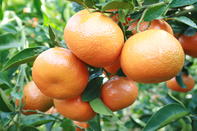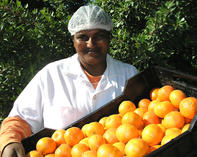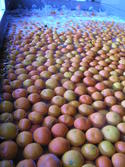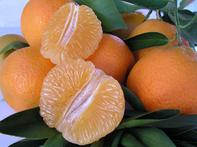Soft citrus refers to a subdivision of citrus that has relatively loose skin and is easy to peel. Mandarins, clementines, satsumas, mineolas and tangerines are all part of this group.

International production
Global production of soft citrus increased from 26 million tons during the 2013/2015 season to 30 million tons during the 2017/2018 season. China was ranked the largest producers of citrus during the 2017/2018 season, at 71% of the total production, followed by the European Union, which accounted for 10% and then Turkey and Morocco, which each accounted for 4% of production.
Over this time, global imports increased from 2 281 000 tons to 2 466 000 tons. Russia ranked as the biggest importer, with 35% of the total imports, the European Union accounted for 19% of these exports, while the United States accounted for 12% of all the imports.
South Africa is the sixth-largest exporter in the world in terms of volume.
Local Production

Soft citrus production started in South Africa in the early 1980s in response to a growing demand for easy peelers and convenient citrus from Europe and the United Kingdom. The first clementines were already imported to South Africa from Corsica in 1973, with selections soon following from Spain and Morocco.
Initial production was driven by the SA Co-operative, Citrus Exchange, which started production trials in the 1970s to identify the most suitable varieties and production practices. At first, production was restricted to the Western Cape, since soft citrus thrives under Mediterranean climates.
BFAP in 2019 identified soft citrus as the highest performing citrus group in terms of gross return per hectare, with predicted to continue for some time. Soft citrus accounted for about 17% of all the citrus produced in South Africa in 2018.
Production
As reflected by the Citrus Growers Association, the total cultivated area under soft citrus production increased from 4 960 ha in 2009 to 16 285 ha in 2018. But more than double these hectares still need to achieve full bearing potential.
The Western Cape was still the biggest producer, with roughly 40% of production, followed by the Eastern Cape, with for 30% of production and Limpopo, which accounted for 24%. Small volumes are also produced in Mpumalanga, the Northern Cape, the North West and KwaZulu-Natal.
Market

Most of South Africa’s soft citrus is exported, with export volumes reaching roughly 13,4 million 15 kg cartons in 2017.
The United Kingdom is our biggest export destination, with a 32% share of total exports, followed by the European Union, which represents a 26% share.
North America and Russia, each represent a 10% share. The remainder is exported to South and East Asia, as well as the Middle East.
Uses

Soft citrus is rich in vitamins, especially A and C, minerals and dietary fibre, with the nutritional value differing slightly for different kinds of soft citrus.
The fruit is primarily enjoyed fresh as a snack, but may also be used in salads and in cooking. Besides this, it may be juiced, dried and processed to produce canned fruit, marmalade, food flavourants and essential oils.
For bulk or Soft Citrus export enquiries please use the enquiry link below.